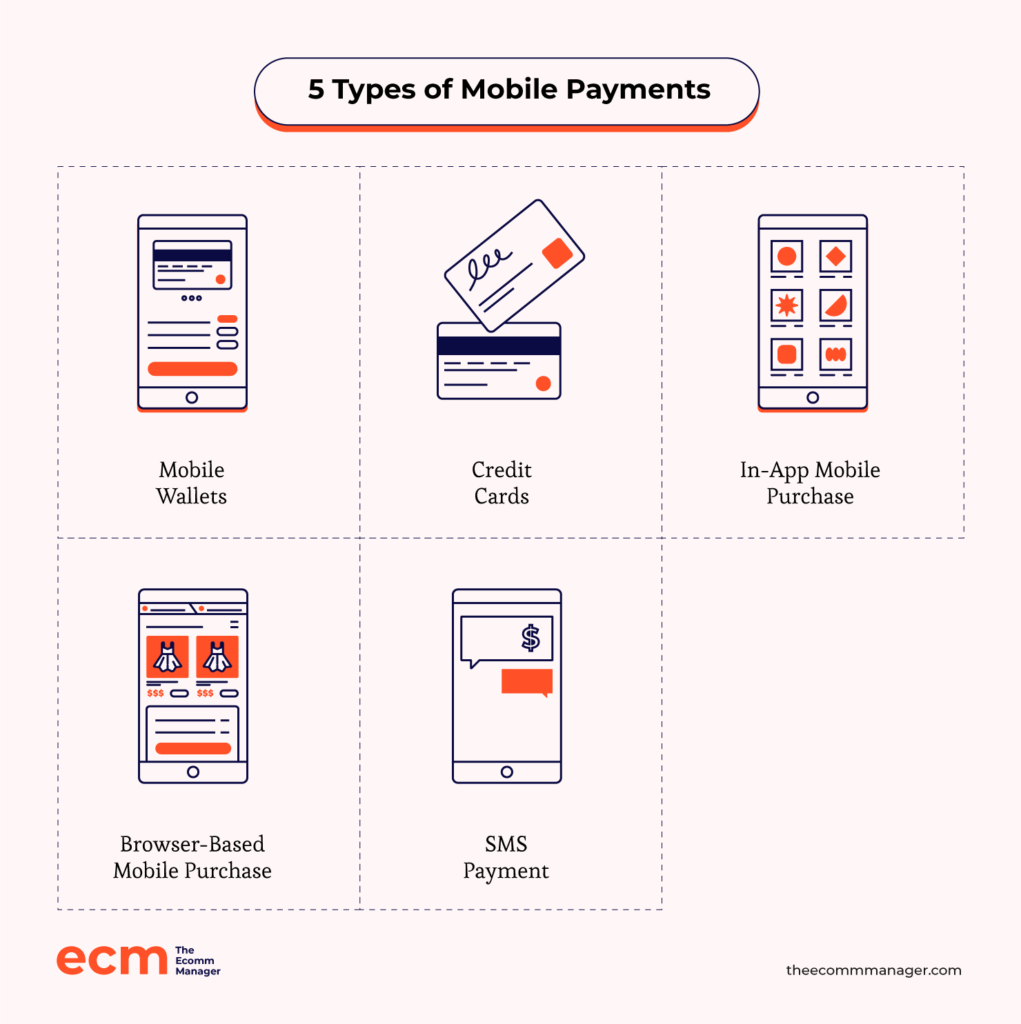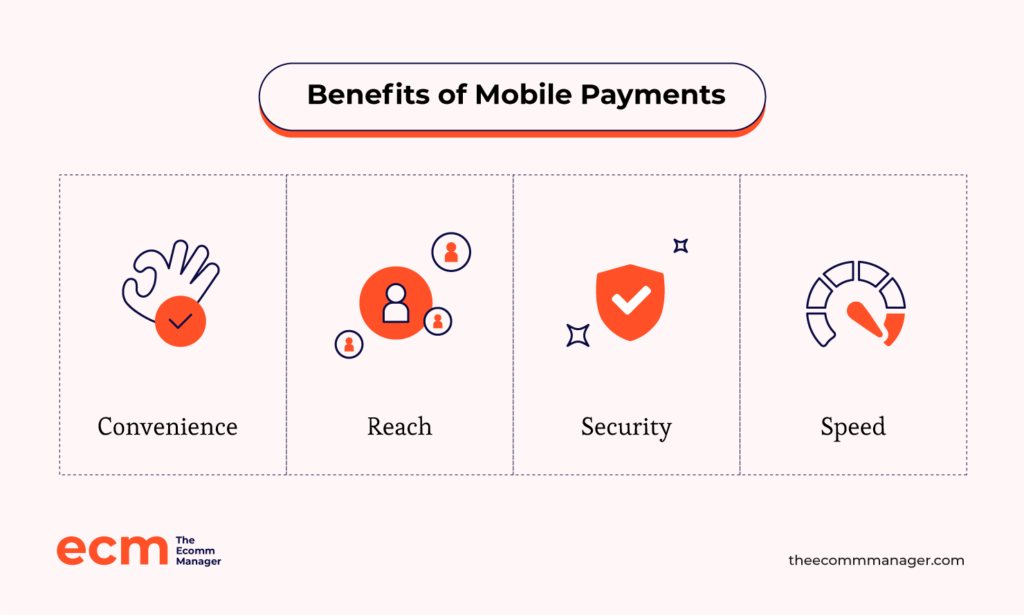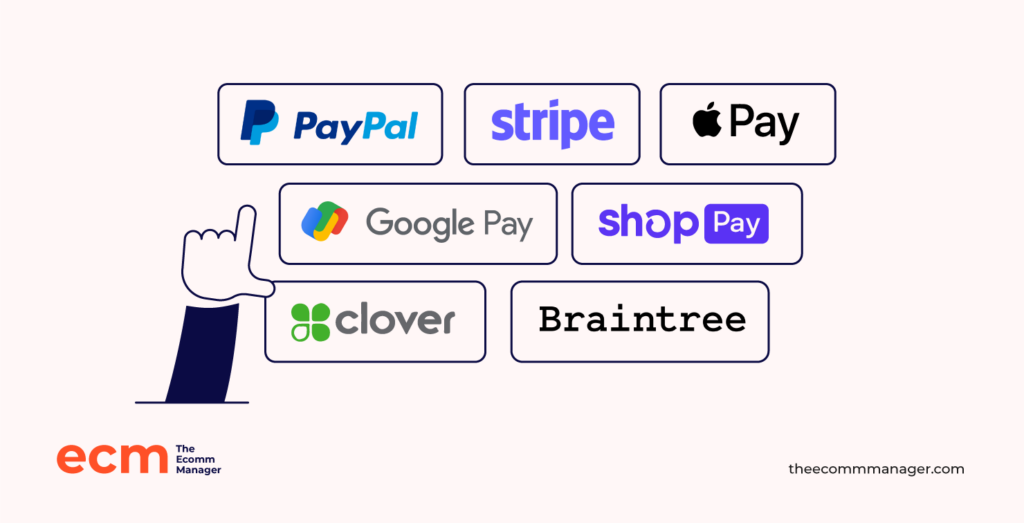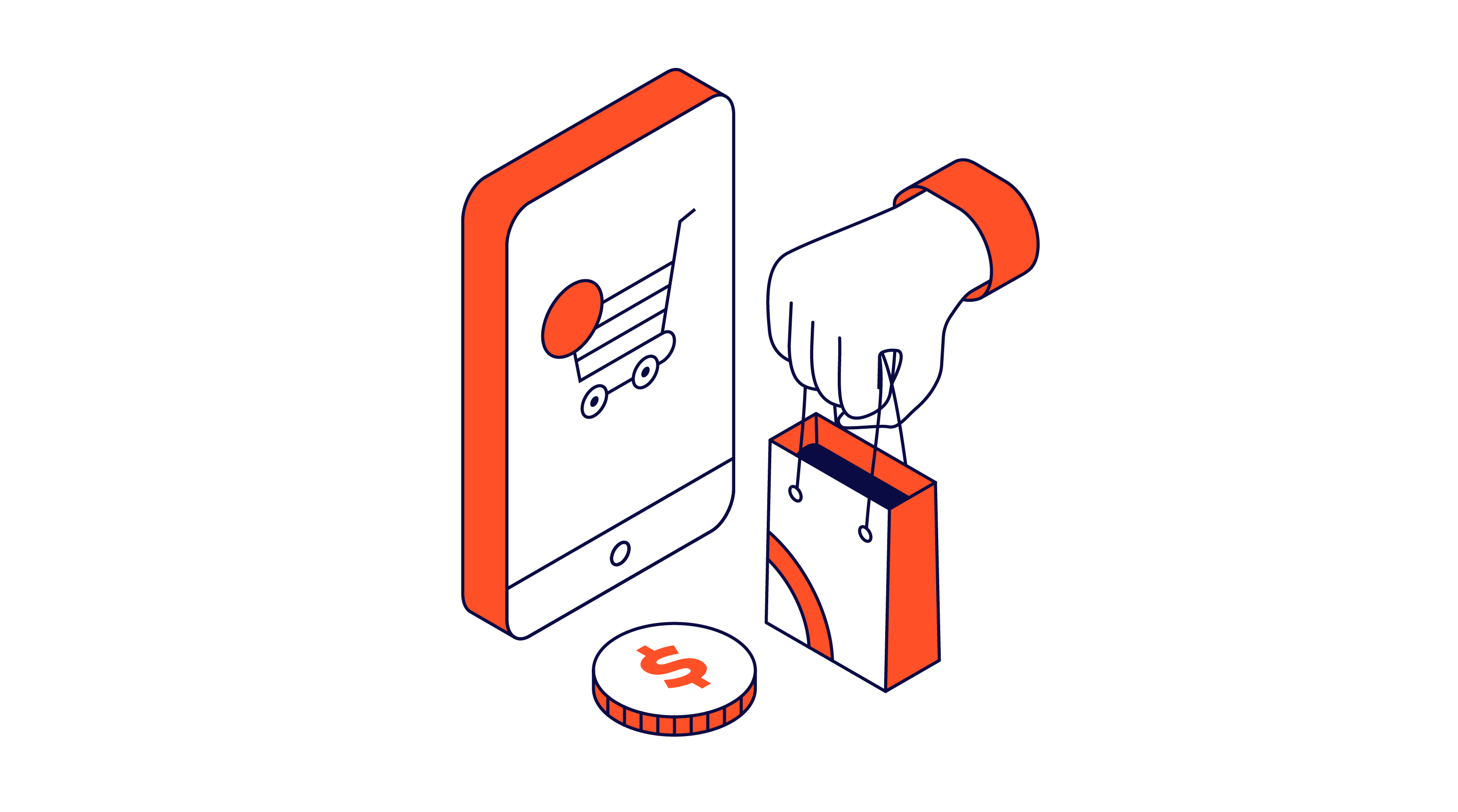Are you really an online business owner if you’re not providing multiple mobile payment types for your customers?
I’m not the judgy type, but in 2024 and with so many options at everyone’s disposal, you have to meet your customer where they’re at.
And chances are… that’s on their mobile device.
That’s why your online store needs to set up mobile payment processing. Don't worry, it's not rocket science. It's actually pretty darn simple for merchants out there.
But here's the deal: it does take a little bit of work in the beginning.
Think about it as embracing the future, where your customers can just wave their phones and boom, payment done. No need for fumbling around with cash or cards. It's all about speed and convenience.
So, it’s high-time you got on board with this mobile payments trend and invested in a snazzy point-of-sale system that can handle all those boundless contactless payments and digital wallet transactions. (I mean why not manifest it, right?)
Let's make shopping easier and more fun for everyone!
What Are Mobile Payments?
Mobile payments refer to any payment made using a mobile device, be it via app, browser, or SMS.
Instead of paying with cash, check, or physical credit cards, a user can use a mobile device to pay for a wide range of services and goods.
This can happen in various ways—via mobile wallet apps, peer-to-peer payment apps, SMS payments, and more.
You may be familiar with Google Pay, Apple Pay, Venmo, Zelle, Cash App, and PayPal. These mobile payment apps have made purchasing so much easier, be it splitting a check with a friend or paying for groceries with a tap.
Mobile commerce is only gaining in popularity, so merchants need to know the ins and outs to stay ahead of the curve.
Let’s look at these different types of mobile payments in detail to better understand how our phones have replaced our wallets.
5 Types of Mobile Payments

Now that you’re on board the mobile payment train (woot woot!), it’s time to actually learn what kinds of mobile payment exist out there. Let’s get into it!
1. Mobile wallets
Think of a mobile wallet as your digital all-in-one buddy.
It holds your card info and lets you pay without lugging your physical card around. The name is pretty self-explanatory.
You stash your card details on your phone, and when it's time to pay, zap, and they transmit to the checkout.
Plus, these handy digital wallets can stash all sorts of cards—loyalty, transit, boarding passes, and more. Convenience in everything? Yes, please.
Ready to go for snappy contactless payments, mobile wallets usually work with a quick PIN or a simple tap of the ol’ finger.
Apple Pay (for iOS), Google Pay (for Android), and Samsung Pay are some of the staples in the mobile wallet game.
Leveraging near-field communication (NFC) on POS system, these apps work like that special chip in your credit card to quickly tap for payment for in-store purchases. Like magic!
For online payments, you merely choose the relevant service (Apple Pay, Google Pay, Shop Pay, etc.) to make a purchase. If you like the tap, you can pretend to do it on your laptop.
2. Mobile credit card readers
Credit card machines are becoming a thing of the past. Okay, maybe that’s a bit dramatic, but there’s no doubt that mobile and wireless credit card readers are a convenient option for online businesses.
You can turn your mobile phones or tablets into credit card machines by investing in credit card payment processors that pair with your mobile or tablet devices or they go into your headphone jacks.
Pretty sure we’ve all come across Square somewhere at this point.
These mobile payment at point of sale device (mPOS) allow small businesses to swipe, dip, or tap credit cards (just as they would with countertop card readers) and accept payments on the spot.
Whether at the farmer’s market or your local brick-and-mortar, these card terminals use NFC magic to accept payment from card or mobile.
3. In-app mobile payments
Picture this: Your potential customer sitting on their couch, thinking about how they were meaning to purchase your product or service that they’ve been seeing around.
And the best part? They can do it right then and there. How? In-app mobile payments.
This isn't your run-of-the-mill browser-based transaction. It's akin to a superpower, some might say. Instead of having your audience surfing through websites, you can let them dive straight into their favorite apps (ahem, yours).
You might be wondering, "How does it all work?"
Your customers just need to register their credit card, debit card, or ACH payment information (an electronic fund transfer made between banks and credit unions across what is called the Automated Clearing House network).
With a few swift clicks, they can get their hands on whatever you’ve got to offer. It's so fast and convenient that you’ll wonder why you ever bothered with cash or endless website forms.
And your customers will, too.
4. Browser-based mobile payments
All of these fun methods of payment don’t mean that mobile browser-based payments aren’t still important, though.
Similar to desktop browsers in function, browser-based mobile payments allow your customers to hit up your website and easily toss whatever they need into their virtual shopping cart, without having to learn any new app functionality.
Like any other desktop browser payment, your customers type in their debit card, gift card, banking or credit card information into your website's checkout form, and—cha-ching—they’re all set.
As much of the world is shopping from their mobile phones these days, this easy way to pay is essential for a good customer experience.
5. SMS payments
While not common in the US, SMS payments (or pay-by-text) are big in the developing world with less reliable internet.
Users link their phone numbers to a bank account or digital wallet and send a text message a particular number with payment details from the merchant. Their account is charged and the merchant gets a quick response with confirmation.
Although it isn’t the most secure mobile payment method, it’s reliable and doesn’t require internet connectivity.
Benefits of Mobile Payments

You might think your business is surviving just fine without mobile payments.
But reality is, mobile payments are a win-win situation for both you and your customers. Let’s get into the juicy benefits.
It’s super convenient, for you and your customers
First up, convenience galore.
Mobile payments make life easier for your customers. They can simply tap their phone or credit card at the point of sale, or make smooth online transactions using credit cards or common payment apps like Google Pay, Shop Pay, or Apple Pay.
No more hassle, just quick and easy payments, which lead to quicker (and easier) purchase decisions for your business.
You can reach more of your audience
More convenience…means, you guessed it, reaching more consumers.
Mobile payments are like The Flash of transaction processing—they're so quick that swiping a credit card looks like slow motion in comparison.
With mobile payment systems in place, your customers, who probably already spend most of the day on their phones, can wave goodbye to those pesky waiting times and say hello to lightning-fast transactions on your online store.
It’s quite secure
Mobile payments are as secure as they get.
Why? Because they happen on mobile devices that require authentication. Think fingerprint scans, facial recognition, or passcodes.
This decreases the chances of anyone getting their hands on customer data. Good luck to anyone trying to guess your old phone number from 8th grade.
Plus, these devices encrypt their transmissions, so intercepting data is a nearly impossible task.
Further, mobile wallet apps use tokenization, essentially replacing your actual card details with digital identifiers (called tokens) to send to merchants, reducing the chances of data breaches and fraud.
Mobile payments are speedy
Now let's talk about speed. Mobile payments are quick when it comes to transaction processing.
That means mobile checkout is just as fast, if not faster, than swiping a credit card.
When shopping in person, you can simply tap to make in-store payments. When shopping online, you can choose the mobile pay icon and have your data autopopulate for fast checkout.
With mobile payment systems, your customers can put long waiting times behind them and make speedy transactions on your online store.
It's all about removing barriers.
How To Add Mobile Payments to Your Ecommerce Store
As you’ve probably gathered by now, implementing mobile payments into your online business can be a game-changer, opening up new opportunities to reach customers and streamline your transactions.
From choosing the right payment processor to which buy now, pay later platform to implement, there are some steps and considerations to help you make this transition.
1. Choose the right mobile payment solution

Research and select a mobile payment gateway provider or service that suits your specific business needs.
Popular options include PayPal, Square, Stripe, and mobile wallet platforms like Apple Pay and Google Pay.
Each has its own features, fees, and compatibility, so choose the one that aligns with your business model.
2. Integrate your payment gateway
Once you've chosen a mobile payment services provider, integrate it into your website or mobile app.
Most providers offer developer-friendly tools and APIs to make this process relatively straightforward. If you're not tech-savvy (don’t worry, we have our moments too), you can hire a developer to do the integration for you.
3. Stay secure and compliant
Security is paramount when dealing with financial transactions, so make sure your chosen payment gateway is compliant with industry standards and regulations, like the Payment Card Industry Data Security Standard (PCI DSS).
It’s also important to ensure website or app is secure, with SSL encryption and robust security measures in place to protect customer data.
You know, just housekeeping.
4. Create a mobile-friendly user experience
You’ve gotta optimize your website or app for mobile users.
Your payment process should be seamless, user-friendly, and responsive on various mobile devices.
Test it thoroughly to ensure a smooth experience for anyone who reaches those touch-points.
5. Offer multiple payment options
Not all customers use the same mobile payment method.
To cater to a broader audience, provide multiple payment options. This can include credit/debit cards, mobile wallets, and even, dare we say it, cryptocurrency, depending on your target audience.
Just not NFTs, please.
6. Promote mobile payments
Educate your customers about the convenience and security of mobile payments.
Highlight any incentives or discounts for using mobile payments, such as loyalty rewards or exclusive offers. Who doesn’t love those?
Once your customers integrate mobile payments into their shopping, you’ll boost your chances of getting the sale (and even nabbing back that abandoned cart).
7. Monitor and analyze your payment system’s performance
Look for trends in payment methods, transaction volumes, and customer feedback. Use the data to make informed decisions and adjustments.
Just as with any customer data, this can help you decide where to put your energy, as precious as it is, to deliver better shopping experiences and get more sales.
8. Provide customer support and assistance
Make sure that you have customer support in place to help users with any payment-related issues or questions.
Even though we’re all online, that human touch just matters.
This helps you quickly address any payment disputes or concerns from your audience to maintain customer trust.
By implementing mobile payments into your online business, you can make transactions easier for your customers, potentially increase your sales, and stay competitive in a rapidly evolving digital landscape.
The Best Mobile Payment Options to Consider For Your Store
We’ve talked about several options throughout this post, but for merchants looking to add more mobile payment functionality to their stores, we’ve got a great guide to the best of the best mobile payment solutions.
Check out the link above to see these selections in more detail, with pricing and ratings and such, but here’s a sneak peek at what we consider to be the best out there right now.
The Future of Payment Is Here
As an online business owner, embracing this trend is not just about keeping up with the times, but about optimizing the shopping experience for your customers.
By integrating mobile payment solutions, you not only cater to the tech-savvy generation but also ensure secure, swift, and seamless transactions.
Whether it's through mobile wallets, in-app payments, or browser-based solutions, the future of ecommerce lies in the palm of our hands—quite literally.
So, as you venture into this mobile-centric world, remember to prioritize user experience, security, and versatility. After all, in the world of online business, adaptability isn't just an advantage; it's a necessity.
Want to stay ahead of this new age of online payments? Subscribe to The Ecomm Manager Newsletter and stay ahead with the latest insights from top thinkers in the ecommerce industry.
Mobile Payment Types FAQs
OK, almost done here. Let’s get into some final questions and answers that we didn’t fully cover above.
What is the difference between mobile wallet and mobile payment?
A mobile wallet is an app that stores payment methods like credit and debit cards on a mobile device, allowing users to conduct transactions directly through their smartphones, tablets, or smartwatches.
Examples include Apple Pay, Google Pay, and Samsung Pay. Mobile payment, however, is a broader term that encompasses any payment made using a mobile device, including transactions through mobile wallets, mobile banking apps, and SMS payments.
Essentially, while all mobile wallet transactions are mobile payments, not all mobile payments involve mobile wallets.
How can integrating NFC technology boost in-store sales for ecommerce brands with physical outlets?
Near Field Communication (NFC) technology can dramatically enhance the customer experience by speeding up transactions and reducing checkout lines.
For ecommerce brands with brick-and-mortar stores, implementing NFC payments can lead to an increase in impulse purchases due to the convenience it offers.
Encouraging customers to use NFC by offering small discounts or loyalty points can further leverage this technology to boost sales.
Can QR code payments play a significant role in improving customer experience and how?
QR codes are making a significant comeback, providing a contactless bridge between physical and digital commerce.
They can be great for enhancing the customer experience by enabling easy access to menus, promotions, and checkouts without the need for physical interaction.
Integrating QR codes can simplify transactions and provide rich data insights that improve personalized marketing efforts.
What should brands consider when choosing between app-based payments and browser-based mobile payments?
Deciding between app-based and browser-based mobile payments depends on your customer engagement strategy and technological resources.
App-based payments can offer a more seamless and controlled environment, which is ideal for regular customers or subscription-based models.
Browser-based payments, on the other hand, might be more suitable for attracting new customers who might hesitate to download an app for a one-time purchase.


